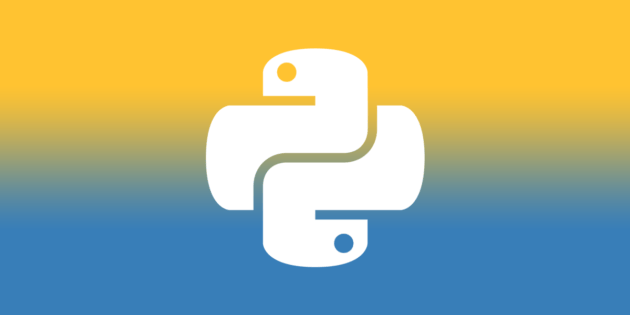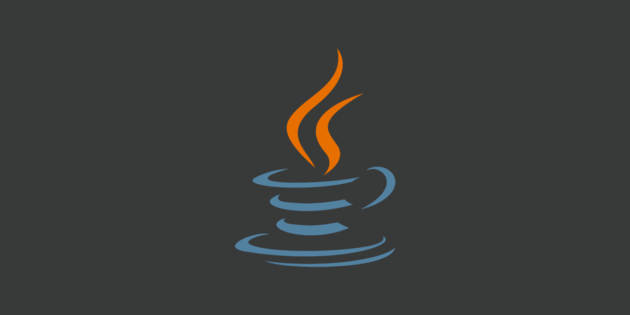Programming languages, like human languages, possess unique structures, syntax, and dynamics. Whereas spoken languages are usually influenced by geography, the choice of programming languages hinges more on the programmer’s inclinations, the culture within the IT community, and business goals. When diving into data science, three programming languages take center stage. We reached out to experts in data analysis to shed light on these languages and explain how they contribute to dissecting big data.
Why Do Programming Languages Matter?

Programming languages play a crucial role in the field of technology and software development. Here are a few reasons why programming languages matter:
Communication with computers:
Programming languages act as a medium of communication between humans and computers. They provide a set of instructions and rules that computers can understand and execute.
Software development:
Programming languages are essential for developing software applications. They provide developers with the tools and syntax to write code that performs specific tasks and solves problems.
Different purposes:
Programming languages are designed to serve different purposes. Some languages are more suitable for web development, while others excel in scientific computing or data analysis. The choice of programming language depends on the requirements of the project.
Efficiency and performance:
Different programming languages have varying levels of efficiency and performance. Some languages are optimized for speed and resource usage, while others prioritize ease of development. The choice of language can impact the performance of an application.
Community and support:
Programming languages have vibrant communities of developers who contribute to the growth and improvement of the language. These communities provide support, libraries, frameworks, and resources that aid in the development process.
Compatibility and integration:
Programming languages need to be compatible with existing systems and technologies. They should be able to integrate with databases, APIs, and other software components to create a seamless ecosystem.
Flexibility and scalability:
Programming languages differ in their flexibility and scalability. Some languages allow for rapid prototyping and quick iterations, while others excel in large-scale enterprise applications. Choosing the right language can determine the future scalability of a project.
Related: 5 Fantastic Programming Languages Best for Cybersecurity.
Top 3 Programming Languages for Big Data

“Programming languages are like a toolbox; pick the right one for the job and you can build amazing things!” – as quoted by Oleksii Petrychuk, the CEO at Develux, in one of his recent articles.
There is an array of programming languages in use today for different applications, but the three that predominantly emerge in the big data landscape are:
- Python.
- R.
- Java.
Each of these languages boasts distinct strengths; some excel in executing large-scale analytical tasks, while others are adept at operationalizing big data and IoT functionalities. Let’s kick things off with Python.
Python Programming Language
Python is rapidly ascending to become a top contender among programming languages globally. As a high-level language with interpreted scripting capabilities, Python is adept at building applications for both web and desktop environments. Its flexibility has endeared it to a broad spectrum of developers and software engineers, who hold the language in high esteem for its clarity and the ease with which one can articulate complex ideas.
Moreover, Python facilitates the swift prototyping of applications, obviating the need for coding from scratch. For those in search of an accessible yet potent language to craft software solutions, Python is a good choice. Furthermore, the Python community is brimming with invaluable resources and seasoned developers who are eager to lend a hand to novices facing queries or challenges.

The rise in Python’s popularity can be attributed to its relatively shallow learning curve, encouraging many novice programmers to consider it as their entry point. But what role does Python play in big data?
Python is a linchpin in big data due to its combination of simplicity and versatility. Here’s a concise overview of Python’s role:
Data Processing:
With libraries like Pandas and Dask, Python excels at cleaning, transforming, and aggregating data, with Dask enabling parallel computing for large datasets.
Data Analysis & Statistics:
Python’s NumPy and SciPy libraries facilitate high-performance numerical analysis and statistical operations on big datasets.
Machine Learning:
Libraries such as scikit-learn and TensorFlow make Python a favorite for developing predictive models and performing data mining on big datasets.
Data Visualization:
Python has powerful visualization libraries like Matplotlib and Seaborn, which help in generating insightful plots and graphs.
Support for Big Data Frameworks:
Python integrates well with big data frameworks like Apache Hadoop and Apache Spark, with PySpark allowing for using Spark with Python.
Community and Resources:
A vibrant community and a wealth of resources make Python an accessible and well-supported choice for big data projects.
In a nutshell, Python is an invaluable tool in the ample data space due to its powerful libraries, compatibility with big data frameworks, and strong community support, enabling efficient data processing, analysis, and visualization.
See also: 10 Most Popular Programming Languages to Learn.
R Programming Language
R programming language holds a prominent place in data science, being a favorite among statisticians and data miners for data analysis and creating statistical software.
As one of the most exhaustive statistical programming languages in existence, R is adept at an array of tasks encompassing data manipulation, visualization, and in-depth statistical analysis.
The libraries within R are equipped to undertake complex statistical operations, including but not limited to linear and nonlinear modeling, spatial and time-series analyses, classification, and conventional statistical tests. Furthermore, R boasts a dynamic community that continuously develops packages to streamline processes, such as specialized statistical methodologies, graphical utilities, data import/export functions, and report generation tools. The abundance and user-friendliness of R packages are key factors contributing to R’s extensive adoption in data science.

Here are key reasons why R stands out as a top programming language:
Statistical Computing Power:
R was specifically designed for statistical computing and analysis. It provides a comprehensive set of built-in statistical functions, packages, and tools that enable data scientists to perform complex statistical operations, hypothesis testing, data modeling, and visualization. R’s extensive statistical capabilities make it an ideal choice for data analysis and research.
Data Visualization:
R excels in data visualization, offering a wide range of graphical and visualization libraries. Packages such as ggplot2, lattice, and plotly provide data scientists with the ability to create compelling visual representations of their data, making it easier to understand and communicate insights effectively. R’s visualization capabilities contribute to its popularity in the field of data analysis.
Vast Collection of Packages:
R has a vast ecosystem of packages contributed by its active community. These packages cover diverse areas such as machine learning, data manipulation, natural language processing, time series analysis, and more. The availability of numerous packages extends the functionality of R and empowers data scientists to solve complex problems efficiently.
Reproducible Research:
R promotes the principles of reproducible research. With tools like R Markdown, data scientists can seamlessly integrate code, visualizations, and narratives into a single document, allowing for transparent and reproducible workflows. This capability enhances collaboration, facilitates sharing of analyses, and improves the overall quality of research.
Active and Supportive Community:
R has a vibrant and passionate community of data scientists, statisticians, and researchers. The community actively contributes to the development of R through the creation of packages, sharing of knowledge and best practices, and participation in forums and conferences. The community’s dedication and support make R a thriving and constantly evolving programming language.
Integration with Other Languages:
R offers seamless integration with other programming languages such as Python and C++. This interoperability allows data scientists to leverage the strengths of different languages and libraries, combining the statistical power of R with the vast ecosystem of Python or the performance of C++ when needed.
Java Programming Language
Java is one of the most widely used and popular programming languages in the world and for good reason. It has gained a reputation as a top programming language due to its versatility, platform independence, robustness, and extensive community support. Here are some key reasons why Java stands out among other programming languages:

Versatility:
Java is a versatile language that can be used for a wide range of applications. It is commonly employed in web development, enterprise software, mobile app development, scientific computing, and more. Its flexibility allows developers to create diverse software solutions.
Platform Independence:
One of Java’s defining features is its platform independence. Java programs can run on any operating system that has a Java Virtual Machine (JVM) installed. This “write once, run anywhere” capability makes Java a preferred choice for cross-platform development, ensuring that applications work consistently across different devices and operating systems.
Robustness:
Java prioritizes reliability and robustness. It includes features such as strong type checking, automatic memory management, and exception handling, which contribute to the stability and resilience of Java applications. These features help developers catch errors early and build more robust software.
Large Standard Library:
Java boasts a vast standard library that provides a wide range of pre-built classes and methods. This extensive library simplifies development tasks and accelerates the coding process. It includes utilities for input/output operations, networking, database connectivity, graphical user interfaces, and more.
Scalability and Performance:
Java’s architecture and runtime environment, including the JVM, are designed for scalability and performance. Java applications can handle high loads and process large volumes of data efficiently. Furthermore, Java’s support for multithreading allows developers to leverage parallelism and take advantage of modern hardware architectures.
Community Support:
Java has a thriving and supportive community of developers worldwide. The community actively contributes to the language’s growth, provides libraries, frameworks, and tools, and offers assistance through forums, online resources, and conferences. This vibrant ecosystem ensures that developers have access to a wealth of knowledge and resources to enhance their Java development experience.
Related: Best Programming Language for iOS App Development.
Conclusion

In conclusion, Java’s versatility, platform independence, robustness, large standard library, scalability, and strong community support make it one of the top big data programming languages. Its widespread adoption across industries and its ability to tackle a variety of development needs has solidified its position as a language of choice for many developers and organizations.





